GET IT UNDER THE TREE: ORDER STANDARD BY 12/10 OR 2-DAY BY 12/21.
Menu
-
-
Shop by Product
- Bestsellers
- Find Your Breed
- Closeout
-
- HOLIDAY EXCHANGES/RETURNS EXTENDED TO JAN 15TH
- Login

GET IT UNDER THE TREE: ORDER STANDARD BY 12/10 OR 2-DAY BY 12/21.
6 min read
Running With Your Dog: The Ulti-mutt Guide
Whether you're a seasoned athlete looking for a pawsitive workout partner or a dog lover seeking to enhance your pup's physical and mental well-being, running together can be an exhilarating experience for both of you. In this ultimate guide, we'll unleash everything you need to know about hitting the trails, streets, or parks with your dog by your side. Check out our complete guide to running with your dog for tips and tricks to create enjoyable running sessions for you and your pup.
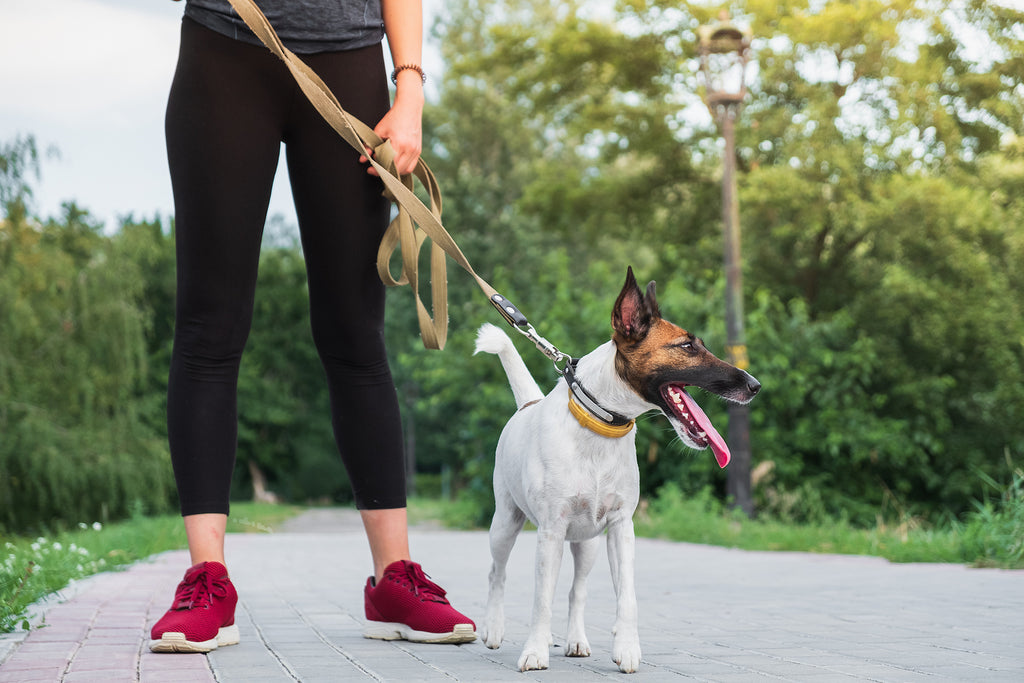
When to Start Running With Your Dog
If you aren’t a runner or haven’t started a running routine with your dog just yet, spring is the perfect time to start. What’s wonderful about running in spring is that the days are longer and the weather is tolerable in most places. Sure allergies can be a setback, but if you’re someone who isn’t affected by the seasonality then the spring is the perfect time to establish a new healthy hobby.
On the other hand, starting to run with your dog in the height of summer or the middle of winter isn't usually the best idea, due to the likelihood of extreme heat or freezing conditions.
Can Your Dog Run With You?
Breed Check
Although all dogs need a healthy amount of exercise, some breeds are not built for running. Short-snouted dogs, like Pugs and French Bulldogs, have trouble regulating their breathing and cooling themselves down after vigorous activity. It’s best to run with them only in cooler weather and stick to short distances.
Age and Health Check
Age and health are also key considerations when deciding whether or not your dog can run with you. Puppies shouldn't go for a run alongside you because their bones will still be in the growth phase. Similarly, obese dogs and pups with joint issues should usually avoid running. As always, it's best to check with your vet if you're unsure whether your dog should run and what a safe distance would be.
Avoid Bloat
It's important not to run with your pup immediately after they've eaten their food, as this might cause “dog bloat” — a fatal condition where the dog's stomach turns over. Larger breeds with deep chests are more prone to bloat - this includes Golden Retrievers, German Shepherds, and many more. Just make sure you give your dog ample time for their food to settle before they have strenous exercise.
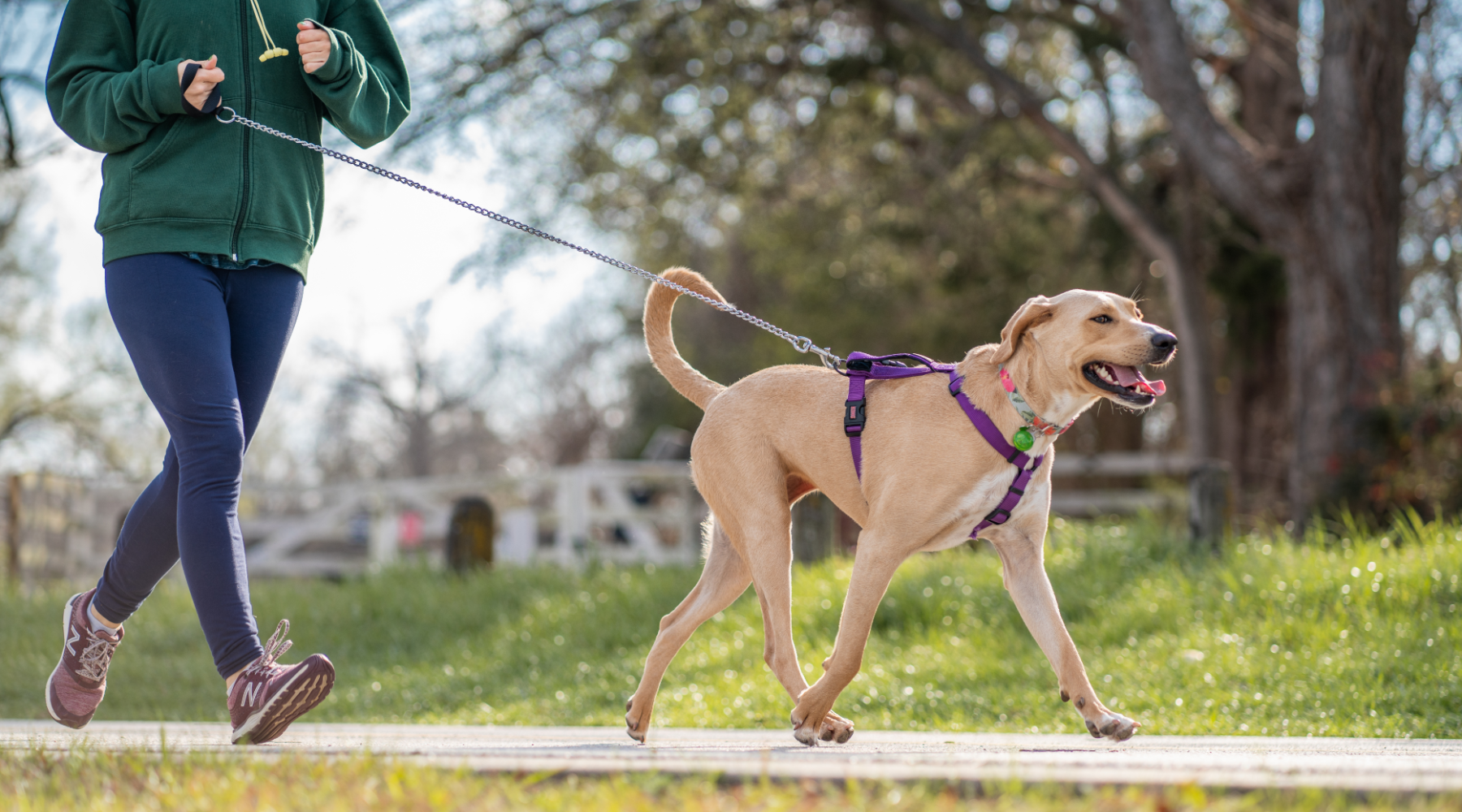
Get the Right Running Gear
Dogs who are new to running can be unpredictable; that’s why you want to use all the right gear to make your running experience, and theirs, pleasurable.
1. Hand Leash
It's recommended that you buy a durable, handheld leash to have the most control over your dog. Be warned that hip leashes can pull you into dangerous situations, especially if you have a larger dog who exhibits erratic behavior. Retractable leashes are also problematic in that they can allow for others to get in between you and your dog.2. Harness
Investing in a harness is the best way to keep your pup safe while running outdoors. Collars are not nearly as effective as they tend to strangle your dog and don’t work as well when it comes to steering and control. A harness will allow you to gain full control if your dog lunges or pulls aggressively while running, keeping you and your pup safe.
3. Gentle Leader
For dogs who pull too much, a gentle leader might be worth considering. When appropriately used, gentle leaders will “gently” guide the dog back to the owner when the dog pulls on the leash, making them effective in teaching your dog proper running etiquette.
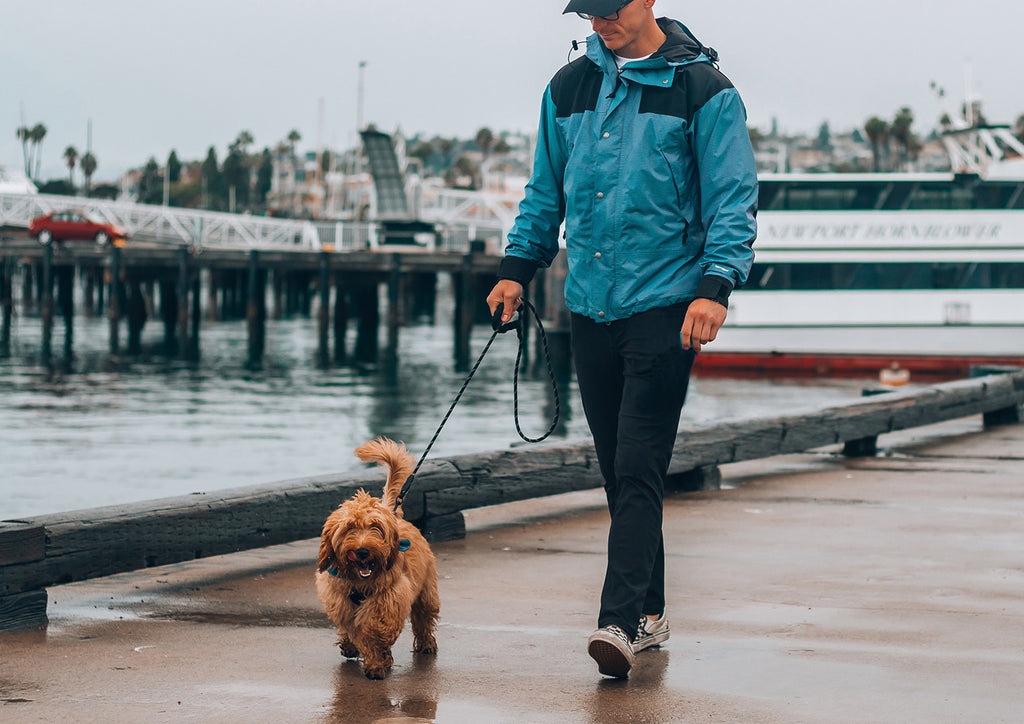
How to Start Running With Your Dog
Check the Weather Before You Leave Home
It’s important to plan your runs around the weather so that you and your pup can enjoy your time together to the fullest.
If there are hotter temperatures, try to keep to shaded areas as much as possible and always avoid the hottest times of the day. If there's rain forecast, a raincoat or a vest would be perfect to keep your pup warm and dry, particularly if they have a thin coat.
Avoid Long Distances
Don’t expect to be knocking out crazy long distances in your first week out. It takes time and practice to build up endurance, so be patient during the process. Dedicate shorter miles initially and build your way up to those longer runs and practice pacing.
Always Warm Up & Cool Down
Whether it’s your first time or thousandth time on the trail with your pup, remember to start off slow and consistent with a simple warm up to get you both going. Just as it's important to warm up, make sure you end each run with some walking as a cool down.
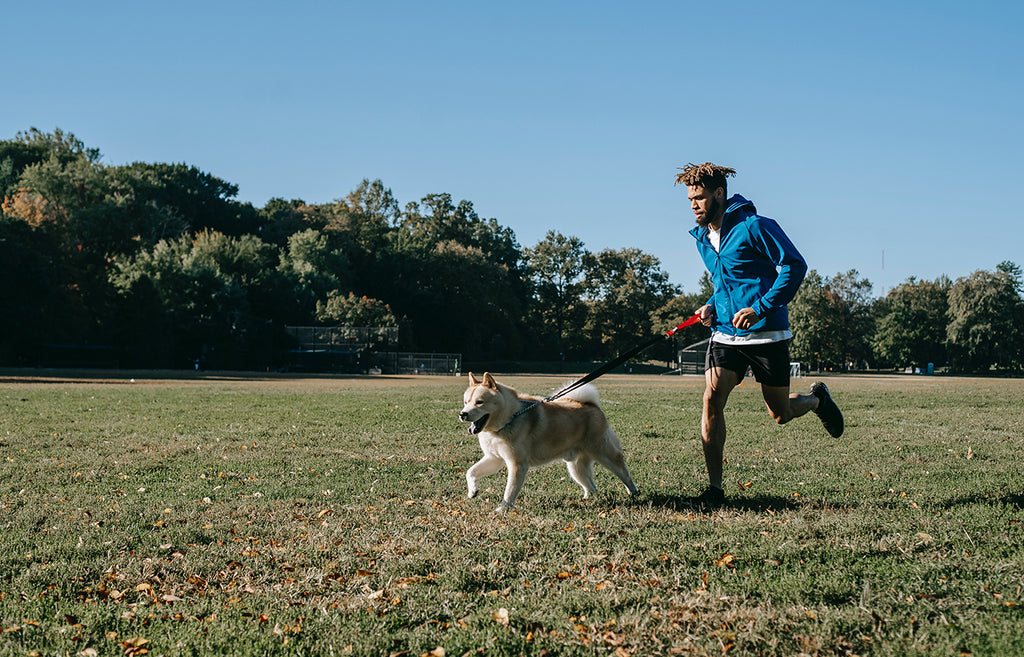
A Short Leash Means More Control
The optimal way to run with your dog is by encouraging them to match your natural running stride. Having your dog on a short leash and running by your side will allow you to get the most out of your run with little interruption.
The other benefit of a short leash is that it helps eliminate distraction and discourages your dog to wander.
If you are serious about upping your running game, you’ll notice that a short leash is the most efficient system to get the job done.
Be Kind & Practice Patience
It is important to teach your dog the dynamic of running alongside you through positive reinforcement. The goal is to get your dog to behave out of comfort and trust, not fear. If your dog is having a hard time focusing, bring treats with you to reward good behavior.
No dog is perfect and it might take a few times for your pup to get the hang of things, but it’s better for them to learn gradually over time so they can remain comfortable and happy on the trail.
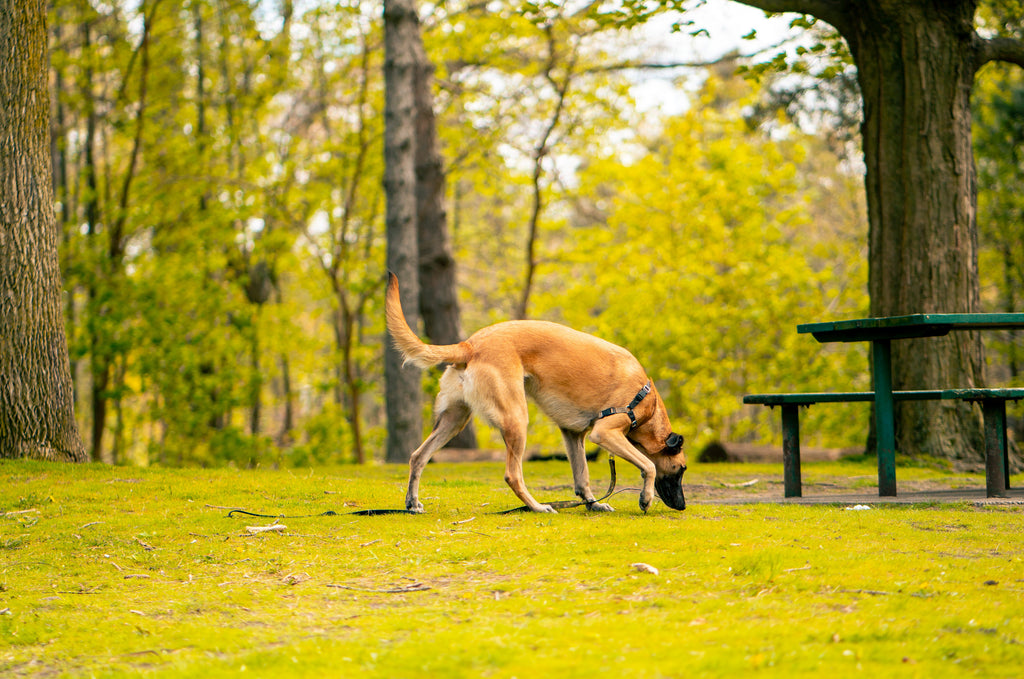
Limit the Sniffs
Dogs love to sniff when they're out and about, especially if they're exploring new places. But a dog's constant sniffing and rummaging through bushes can easily slow you down and ruin the pace of the run. As a solution, try walking your dog at the beginning of the trail so they can become familiar with their surroundings. Let them do their business and get some sniffs in while you take time to stretch and warm yourself up. Alternatively, try to run on wider paths when possible so there are less distractions.
Plan Your Waste Stops (If Possible)
The one thing that can absolutely ruin a run is if your pup does their business and there’s no trash can in site! For those who run loops, you could leave the bag off to the side if you plan to pick it up on your way back (although this can be easy to forget and you become “that person”). If you want to maximize your run, plan to run in spots that have trash cans along the way so you’re not stuck carrying a stinky bag for your entire run!

Allow Off the Leash Time (If Permitted)
If you’re able to, designate a stretch of your route for some off leash fun. Doing so will require prior training with your pup, but that’s only so they don’t run off too far and that they come back when you call them.
What’s great about being off leash is that you can get some hands free run time and your pup gets to sniff, sprint, and explore on their own (but not too far). It’s heartwarming to see your furry companion revel in their freedom and then when it’s time to clip up, they usually come back happier than before.
Check-In With Your Dog After Every Run
If you’re going to be running outdoors with your pup in the spring or summer, it's imperative that you examine your dog during and after your run for foxtails, burrs, and ticks. Foxtails, for example, like to work their way through the fur and into the skin, getting deeper until surgery is needed. Make sure to examine inside the nose, backside, paws, and sides of your dog for any foreign objects. Ticks tend to latch on in and around the ears, paws, and tender spots like the soft skin on the inside of the leg or belly.
Running with your dog is a fun way to get plenty of exercise and build a closer bond with your canine companion. By following the tips outlined in this guide, you can ensure that every run with your pup is not only safe and enjoyable but also contributes to their overall health and happiness.
Find dog apparel for all activities in our Dogs Collection, whether you're heading out for some exercise or you feel like lounging at home!
Leave a comment
Comments will be approved before showing up.
Subscribe
Sign up to get the latest on sales, new releases and more …

